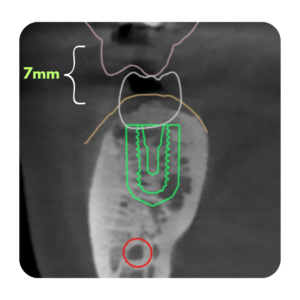Intro
Dentists know how crucial it is to ensure that dental implants are stable at the time of surgery. Although implants with low stability can definitely still integrate, the initial stability can be a good sign of smooth sailing ahead. The go-to method to check this is by measuring the insertion torque (IT) with a wrench, but a study from Sapienza University of Rome decided to dig a bit deeper into this. They wanted to know if IT is correlated with secondary stability.
Study Design and Objectives
The study, which took place between February 2014 and February 2018, wanted to figure out if there’s a connection between IT and another measure called the implant stability quotient (ISQ).
The idea was to check if IT and ISQ values are related at different stages: right at the start (T0), after 2 months of healing (T1), and then at 6 (T2) and 12 months (T3) after the implant is loaded.
This is how we can get some insight into if there is a connection between IT and secondary stability. Secondary stability is the stability of an implant that is achieved over time after it’s placement, as the bone remodels and heals around the implant.
The study also looked at whether different implant designs and placement areas influenced the results, and if a high IT value (> 50 Ncm) had any impact on long-term stability.
Methods
The study included 142 people who got 268 implants. These implants were similar but had slight differences in design. Everything was meticulously controlled to ensure unbiased results, with one experienced operator doing the measurements and everyone sticking strictly to the plan.
Is IT Correlated with ISQ?
At the time of implant insertion (T0), the study observed a significant positive correlation between IT and ISQ for implants with an IT of 50 Ncm or less. This means that implants that required a higher torque to be inserted initially showed higher stability as indicated by the ISQ values.
Follow-Up Observations (T1, T2, T3):
However, as time progressed, this relationship started to change:
2 Months (T1): At the 2-month follow-up, the study did not find a statistically significant correlation between IT and ISQ.
6 Months (T2) and 12 Months (T3): This trend continued at the 6-month and 12-month follow-ups. The data showed that the initial correlation between IT and ISQ was not maintained, and there was no significant association between the two parameters at these time points.
In essence, while there seems to be a connection between IT and ISQ at the point of insertion, this link diminishes over time. The study suggests that IT may be a good indicator of immediate implant stability but may not reliably predict the stability in the longer term as assessed by ISQ values.
Can IT Values Predict Secondary Implant Stability?
The researchers tested secondary stability via ISQ.
The study suggests that even though IT values can give us a snapshot of the implant’s initial stability, they might not be that reliable for predicting how stable the implant will be in the long run.
The link between IT and ISQ seemed to lessen as time went on, hinting that there are other factors at play when it comes to long-term stability.
Results
Of the 250 people checked, 142 were included and 268 implants were placed. The significant link between IT and ISQ was only really present at the start (T0) for implants with an IT ≤ 50 Ncm. This link wasn’t significant later on (T1, T2, T3), and neither the design of the implant nor where it was placed seemed to have an influence. Also, a high IT didn’t necessarily mean better stability over time.
Conclusion
So, what does this mean for us dentists? Well, IT is a handy measure at the point of insertion (T0), for example, to help us determine if something tolerates immediate load. But its link with the ISQ measurement lessens over time. Neither the design of the implant nor its placement had much impact on this relationship. Therefore, while IT is useful, it might not be the best indicator to rely on for predicting how well an implant will fare in the long term.











Responses